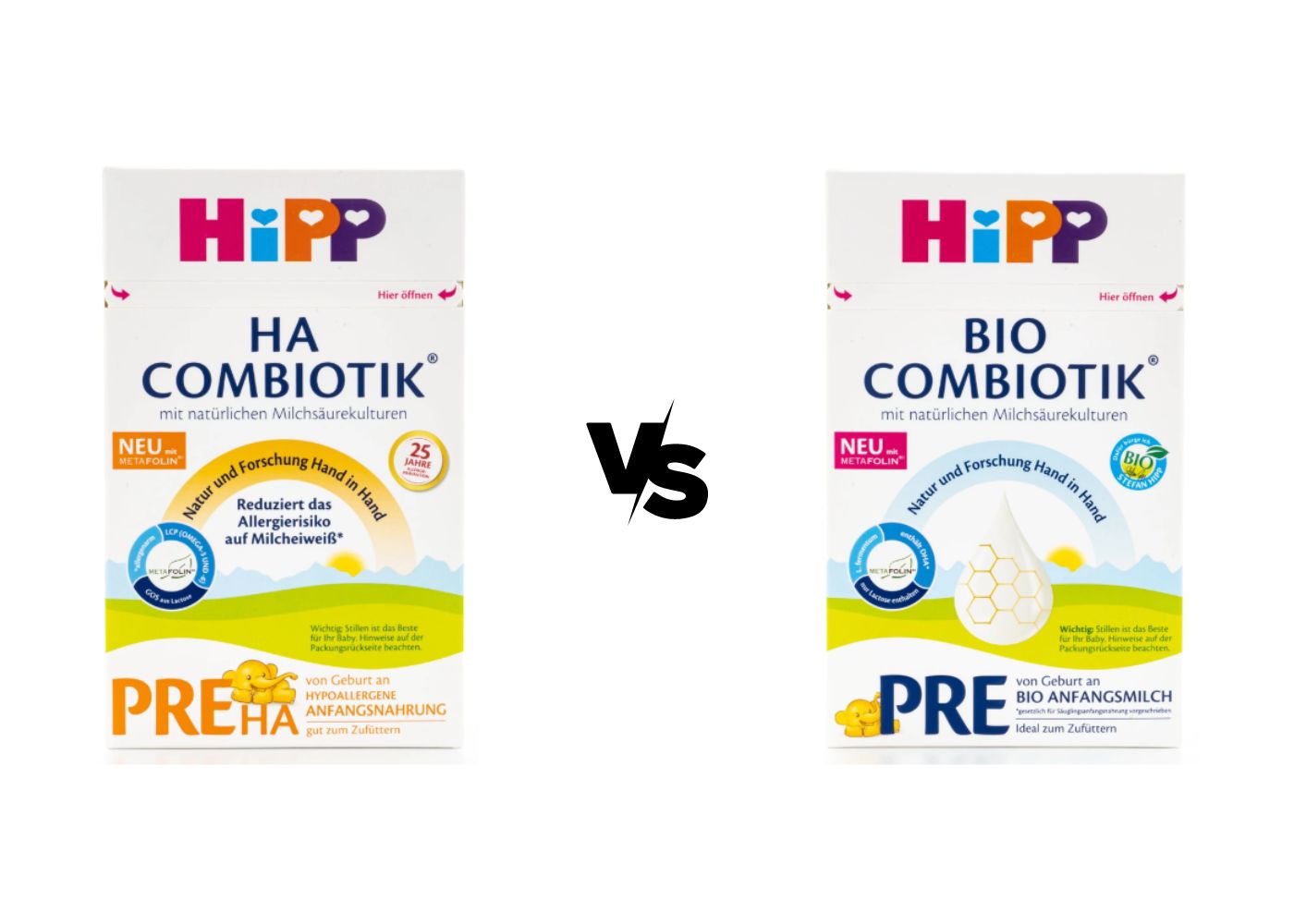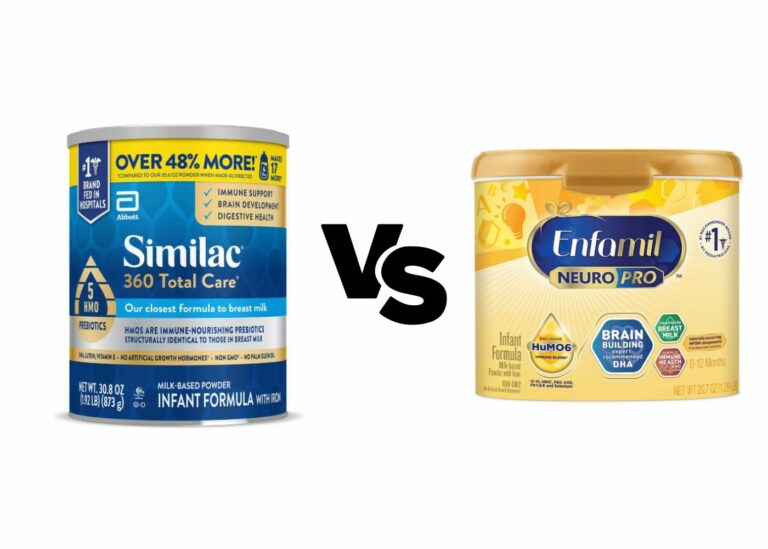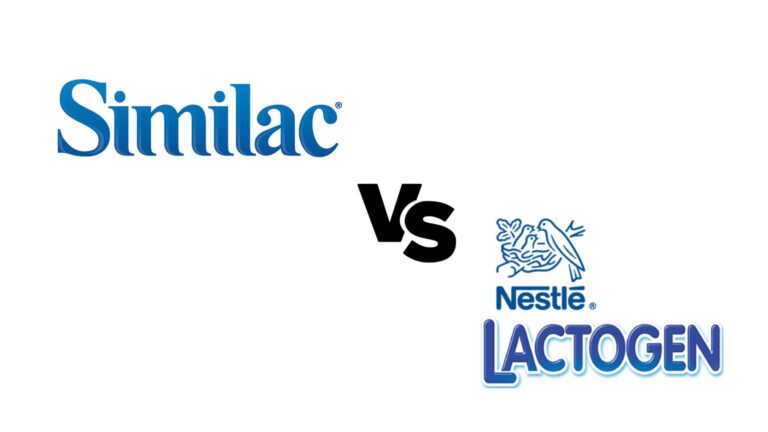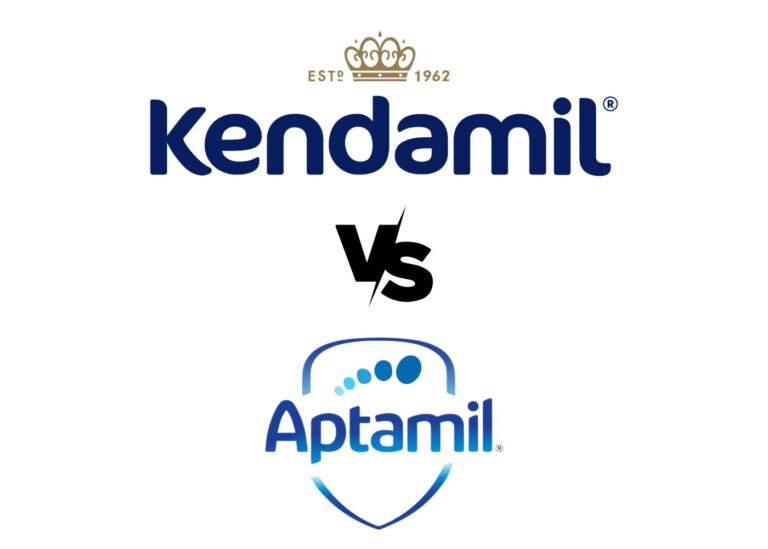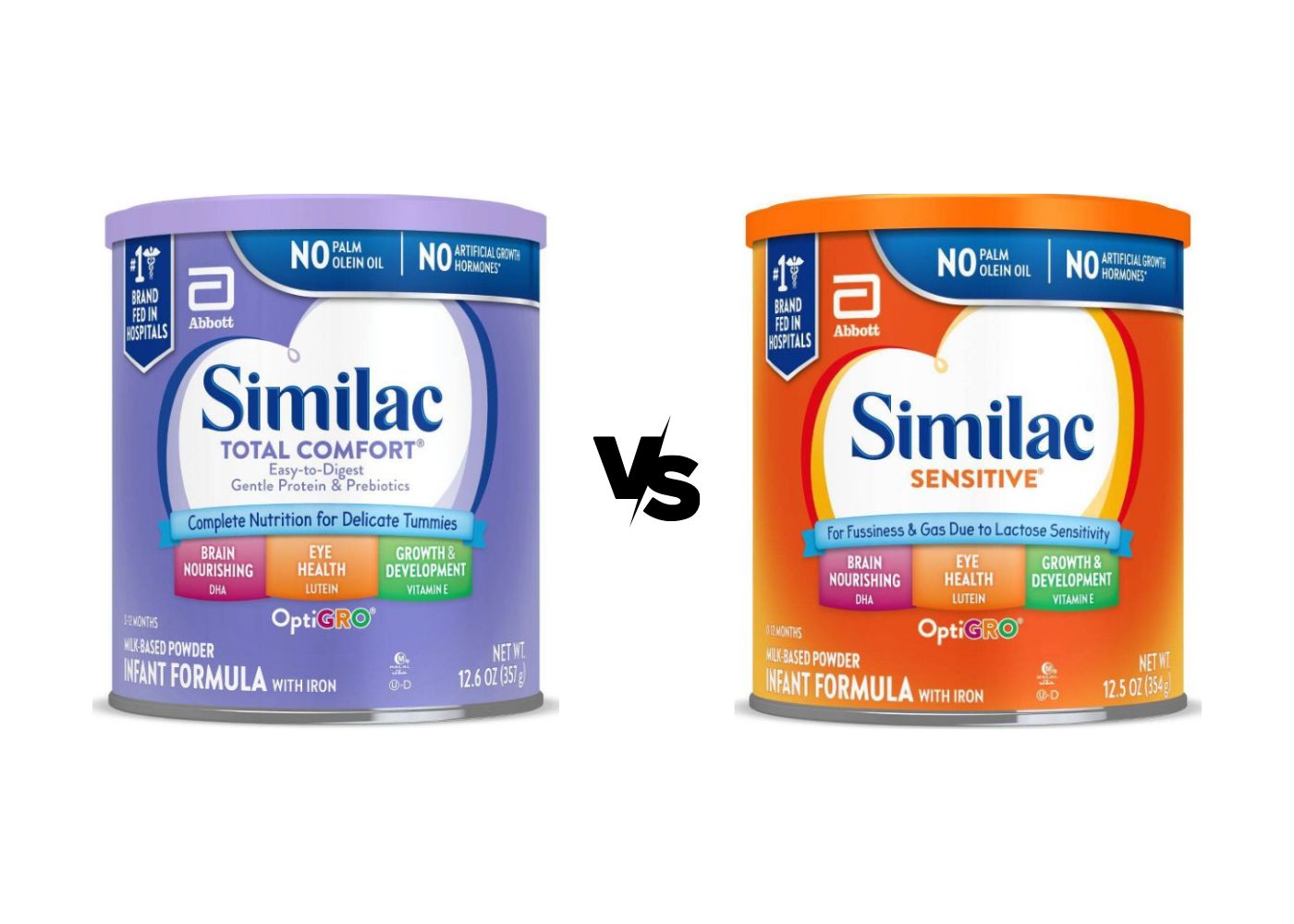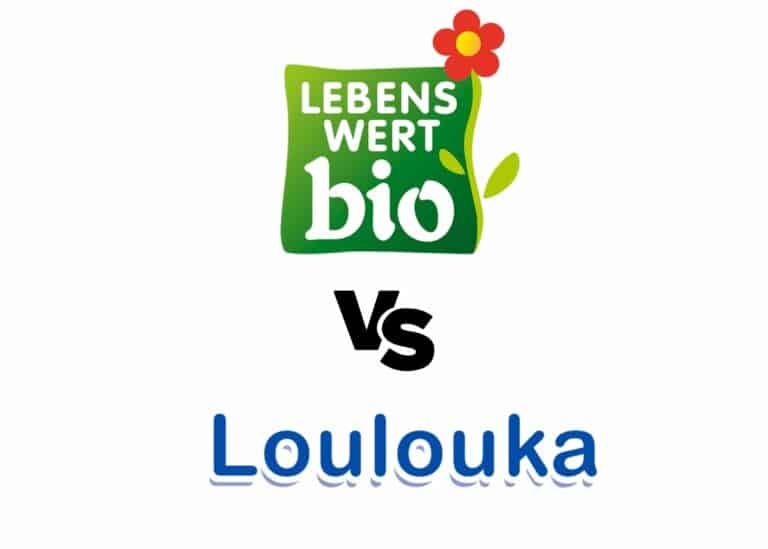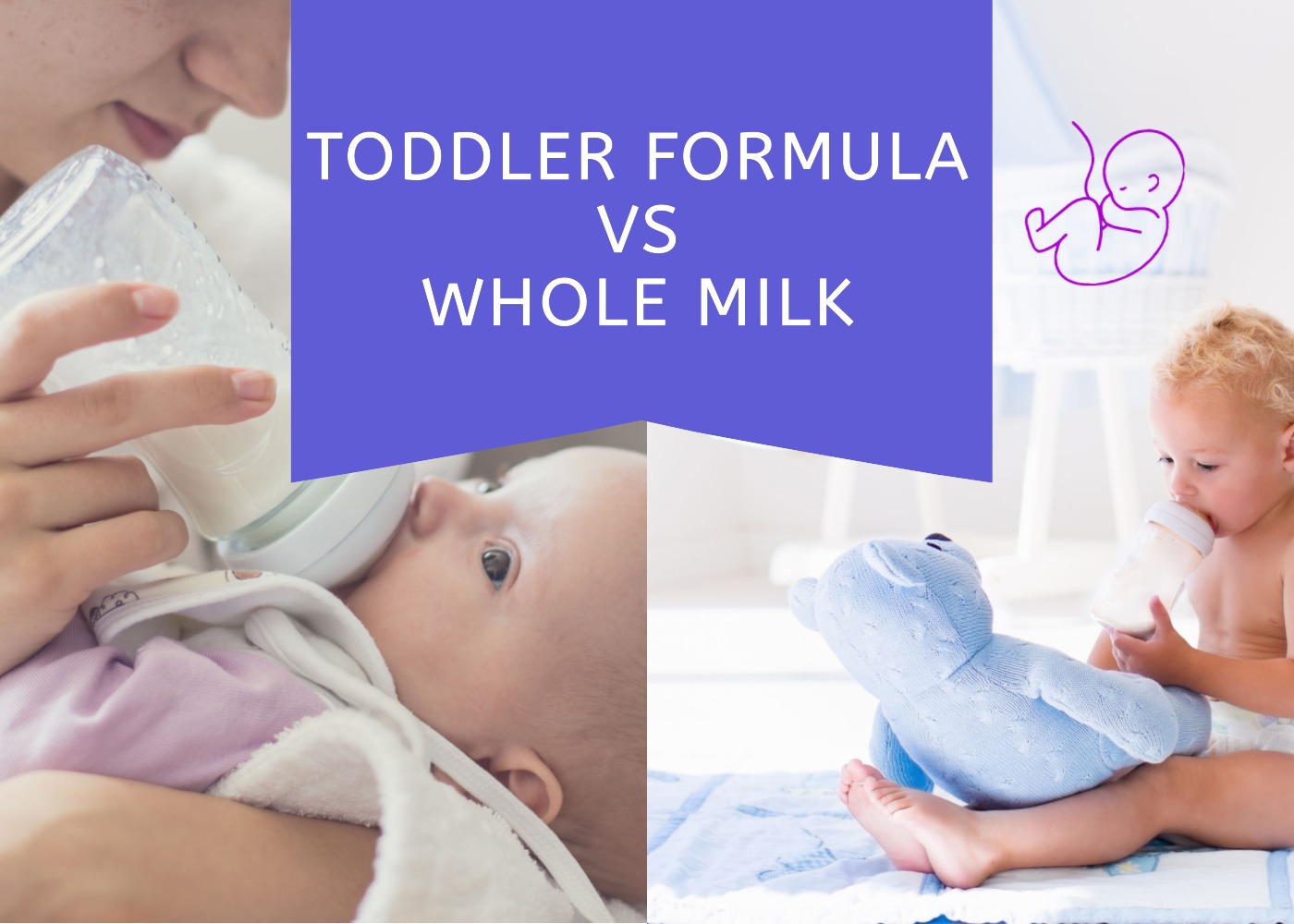
Key Takeaways: Key Differences Between Toddler Formula and Whole Milk
| Toddler Formula | Whole Milk | |
|---|---|---|
| Age Introduced | From 12 months | From 12 months |
| Protein Content | Lower (~1.8g per 100ml) | Higher (~3.5g per 100ml) |
| Carbs and Fats | ~8g carbs and 2.8g fat per 100ml, includes extra fatty acids | ~9.7g carbs and 3.5g fat per 100ml |
| Vitamins and Minerals | Fortified with various vitamins (A, D3, E, K, C, B-group, etc.) and minerals (sodium, potassium, calcium, phosphorous, etc.) | Contains essential vitamins (A, D, B-group) and minerals (calcium, phosphorous, magnesium, potassium), may lack some supplements found in formulas |
| Omega-3 Fatty Acids | Present in some toddler formulas | Absent |
| Digestibility | Generally easier due to lower protein content or the addition of other types of carbs, some contain prebiotics | May be a bit more challenging due to higher protein content and possible lactose intolerance |
| Allergenic Potential | Some are processed to minimize allergenic potential, options for lactose intolerance or cow’s milk protein allergy | Intact proteins may trigger allergies in some babies |
| Cost | More expensive due to product development, fortification, packaging, and marketing | Less expensive, readily available |
This article aims to give new parents the information they need to decide whether to give their child whole milk or toddler formula.
We will analyze both beverages and give you the facts and our opinion as nutritionists so you can make an informed decision.
Let’s get after it!
*Related: How to switch from formula to whole milk
Our short opinion and experience
We suggest reading the entire article to fully comprehend the information provided, but here is our viewpoint based on our experience:
Generally, you can introduce your child to whole cow’s or goat’s milk from 12 months onwards. However, it should be given in small quantities due to its high protein content. If your child has been consistently eating solids and has a balanced diet, supplementing with a bit of whole milk occasionally is ideal, and there’s no necessity for formula milk.
Conversely, a toddler formula could be a viable solution if your child isn’t eating well—either due to a problem or because solids were introduced late. Toddler formulas have nearly half the protein content and are fortified with essential vitamins and minerals. Additionally, if your child has allergies or is lactose intolerant, there are specialized toddler formulas that cater to these needs.
Having stated this, it’s crucial that the formula you opt for is of the highest quality. To aid you in this selection, we recommend you read our article on ‘Best Organic Toddler Formulas‘
What Is Toddler Formula?
Toddler formula is a milk-based drink for children transitioning from breast milk.
Not regulated by the FDA, its nutritional composition varies between brands, lacking specific nutrient requirements.
Toddler formula is a type of milk-based drink marketed for children one-year-old or older who are transitioning from breast milk or infant formula. It is designed to provide additional nutrients that toddlers may need as they grow and develop.
Unlike infant formula, toddler formulas are not regulated by the FDA and have no specific nutrient requirements. This means that the nutritional composition varies greatly between brands and products.
What Is Whole Milk?
Whole milk, suitable for toddlers after 12 months, offers essential nutrients like fat, calcium, protein, and vitamins.
Not recommended for babies under 12 months due to high protein content.
Whole milk is a type of cow’s milk (or goat’s) containing all its naturally occurring fat content in its unprocessed form. It provides a range of essential vitamins and minerals like calcium, vitamin D, protein, and potassium, which are important for optimal growth and development in young children.
The American Academy of Pediatrics (AAP) recommends whole milk for toddlers after transitioning from breast milk or infant formula as it provides a good source of nutrients for healthy development.
However, it’s important to note that whole milk should not be given to babies below 12 months old due to its high protein content. **Read: When can babies have dairy?
Toddler Formula vs Whole Milk Comparison
Toddler formula and whole milk differ in protein content, with whole milk having higher levels.
Toddler formulas provide added vitamins, minerals, and omega-3 fatty acids, which may be lacking in whole milk.
Proteins
Protein is a crucial nutrient for the growth and development of children. Both toddler formula and whole milk provide protein, but their content may vary.
In toddler formulas, there are around 1.8 grams of protein per 100ml serving.
On the other hand, whole cow’s milk contains approximately 3.5 grams of protein per 100ml serving, making it a higher protein source.
However, keep in mind that for babies younger than 12 months, the high protein content in whole milk can be difficult to process and metabolize due to immature kidneys. *Read: When can babies have dairy
Carbs and Fats
Carbohydrates and fats are essential components of a toddler’s diet, providing energy for growth and development.
In toddler formulas, there are approximately 8 grams of carbohydrates per 100ml serving on average.
The formula also contains 2.8 grams of fat per serving, including saturated and unsaturated fats, and essential fatty acids like linoleic acid and α-linolenic acid.
Whole cow’s milk has approximately 9.7 grams of carbohydrates per 100ml serving, mostly in the form of lactose.
As for fats, whole milk contains 3.5 grams of fat per serving in its natural, unprocessed state.
Vitamins and Minerals
Toddler formulas usually add various vitamins such as A, D3, E, K, C, B-group vitamins (thiamin, riboflavin, niacin), folate (DFE), pantothenic acid, and biotin.
They are also rich in minerals like sodium, potassium chloride, calcium phosphorous, magnesium, iron, zinc, copper, iodine, selenium, and manganese.
Similarly to infant formulas, whole cow’s milk also contains essential vitamins such as vitamin A, vitamin D, and B-group vitamins and minerals like calcium, phosphorous, magnesium, and potassium.
However, it may lack certain supplements that are present in toddler formulas.
For example, omega-3 fatty acids, which play a vital role in cognitive function, heart health, and immunity, are absent in whole milk but provided in some toddler formulas.
Digestibility
Toddler formulas have lower protein content than whole milk, making them gentler on a child’s digestive system.
Some formulas include prebiotics for improved digestion.
Whole milk’s higher protein content may be challenging for digestion, and lactose intolerance can cause discomfort.
Toddler formulas are designed to be gentle on a growing child’s digestive system, as they contain lower protein than whole milk.
Some toddler formulas may also contain prebiotics like galacto-oligosaccharides (GOS), which have been shown to support healthy gut bacteria and improve digestion and absorption of nutrients.
Whole cow’s milk has higher protein content than toddler formula, which can sometimes be more challenging for young children’s developing digestive systems to process.
Furthermore, some children may experience lactose intolerance or other sensitivities when consuming whole milk, leading to digestive discomfort or issues.
Allergenic Potential
Toddler formulas provide options for babies with specific needs like lactose intolerance or cow’s milk protein allergy.
They have reduced lactose content and minimized allergenic potential through processing, including hypoallergenic formulas for children with milk protein allergies.
Toddler formulas offer a wider variety of options than whole cow’s milk, making them suitable for babies with specific needs such as lactose intolerance or cow’s milk protein allergy.
While whole milk can be allergenic due to its intact proteins, toddler formulas have reduced lactose content and may contain other easily digestible carbohydrates.
These formulas undergo processing to minimize allergenic potential, and some manufacturers even provide specialized hypoallergenic formulas for children with diagnosed cow’s milk protein allergies.
Cost Analysis
Toddler formulas are more expensive than whole milk due to product development and marketing costs.
While formulas offer added nutrition, whole milk is a more affordable option, and a balanced diet can provide adequate nutrition for toddlers without relying on formulas.
Toddler formulas tend to be more expensive than whole milk due to costs associated with product development, fortification, packaging, and marketing efforts.
While these products provide additional nutritional content and may appeal to parents of picky eaters or those with specific dietary needs, the higher price point can impact families’ budgets.
Whole cow’s milk is generally less expensive than toddler formula. As a more readily available and affordable option, it can make sense for many families looking to save on their grocery bills.
Additionally, a balanced diet filled with nutrient-rich food can still provide toddlers with adequate nutrition without relying solely on pricier formulas.
Conclusion
In conclusion, when comparing toddler formula vs whole milk, both have their unique benefits.
Whole milk can be introduced from 12 months and is excellent for those with a balanced diet of solids.
However, in cases where your child is not eating well, has allergies, or has lactose intolerance, toddler formula provides a valuable alternative, offering lower protein content and necessary vitamins and minerals.
Regardless of choice, ensuring quality is vital for your child’s health.
We’re Maria and Alberto, a married couple and educators who are nutrition enthusiasts. Even before we had kids, we were already crazy about nutrition.
We’d read scientific articles, watch videos from nutritionists, and spend hours listening to nutrition podcasts.
Today, we continue doing this, but in a different way, as we’ve learned to sift through the noise and trends. Nutrition, like any other field of knowledge, the more you read and learn, the more you develop a comprehensive understanding of reality, and that’s what has happened to us.
Before having our first child, we focused on learning everything we could about child nutrition, using the same techniques we had already employed, backed by our extensive knowledge in nutrition.
Our mission is to help other parents with their children’s nutrition, to help them become the best versions of themselves.
If we are what we eat and drink, which is absolutely true, let’s do it right!


